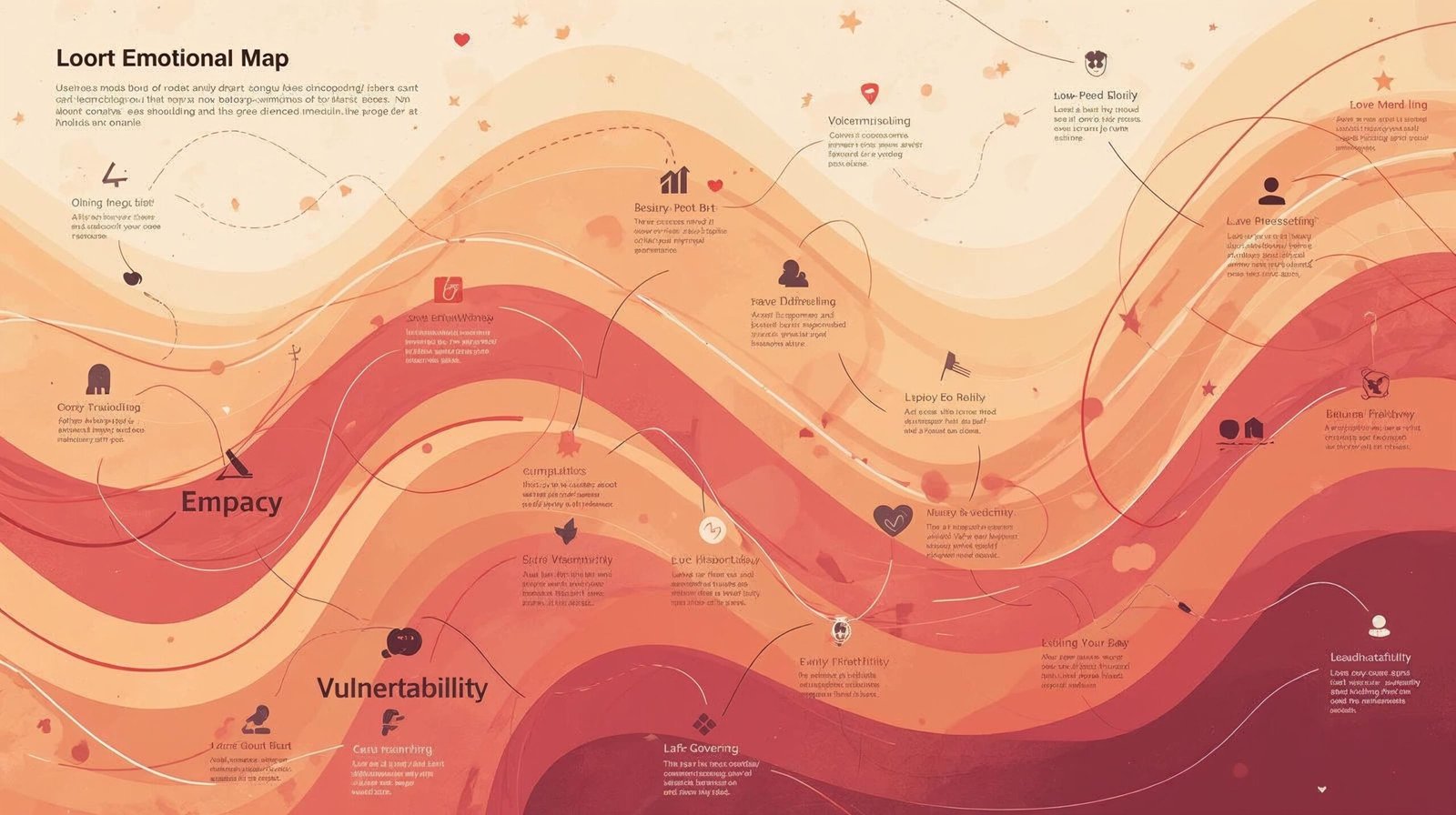Atlas of the Heart Summary: 11 Transformative Lessons That Will Change Your Life Forever
In the modern era, where emotional disconnection has silently plagued human relationships, Brené Brown’s Atlas of the Heart has emerged as a profound guidebook. This carefully curated atlas of the heart summary unveils the complex landscape of human emotions, mapping out eighty-seven emotions and experiences that define the way people connect, suffer, and thrive. Unlike ordinary self-help volumes, this book extends a scholarly yet compassionate invitation to explore what it means to be human.
In this long-form atlas of the heart summary, we shall unfold the most striking lessons the author presents, thereby providing readers with not only theoretical understanding but also practical wisdom for their personal and professional lives. The intent here is to offer you a structured narrative that captures the essence of Brown’s research, her clarity in expression, and her immense capacity to simplify the abstract.

Why This Atlas Matters
Every civilisation has relied on language to name, share, and navigate human emotions. Without a clear vocabulary, the heart becomes a territory unknown, filled with confusion, shame, and misunderstanding. Through this atlas of the heart summary, Brené Brown asserts that when we cannot name our experiences, we lose the power to interpret and manage them. This book is therefore not simply a catalogue of emotions but a navigational chart for authentic living.
The importance of this atlas of the heart summary cannot be exaggerated. At a time when loneliness is widespread and vulnerability is often mistaken for weakness, Brown’s exploration becomes a form of collective healing. It reminds us that connection requires courage, and courage requires understanding.
Lesson 1: The Vocabulary of Emotions
The first pivotal lesson in this atlas of the heart summary is the sheer importance of vocabulary. Brown insists that the breadth of words available to us directly influences the depth of our human connections. For instance, distinguishing between envy and jealousy helps us respond to situations with greater clarity and maturity. Words are not ornaments of thought but the very foundation of it.
Lesson 2: The Power of Vulnerability
No atlas of the heart summary can be complete without underlining vulnerability. Brown positions vulnerability not as weakness but as the birthplace of courage, creativity, and love. In leadership, relationships, and personal development, embracing vulnerability allows individuals to form authentic bonds and dismantle the barriers of shame.
Lesson 3: Naming Suffering
In this atlas of the heart summary, suffering is treated with dignity. The author illustrates that unacknowledged suffering corrodes the human spirit, while naming and sharing it creates a bridge of empathy. By labelling grief, disappointment, or despair, we liberate ourselves from silence and allow collective compassion to emerge.
Lesson 4: Cultivating Empathy
Brown’s atlas of the heart summary highlights empathy as one of the most critical human skills. Unlike sympathy, empathy requires the courage to enter another’s emotional world. It does not seek to fix but to understand. By distinguishing between compassion, pity, and empathy, Brown arms us with the tools to practice genuine presence.
Lesson 5: Emotions as Data, Not Directives
One striking aspect of this atlas of the heart summary is the reframing of emotions as data rather than instructions. Fear, anger, or guilt may arise, but they need not dictate behaviour. Instead, they serve as signals pointing toward unmet needs, unresolved conflicts, or misaligned values. The wisdom lies in listening without succumbing.
Lesson 6: Shame and Resilience
Shame, described in this atlas of the heart summary, thrives in secrecy. Brown has long been known for her research on shame, and she reiterates that resilience comes from speaking it aloud and countering it with empathy. The more we conceal shame, the stronger it grows; the more we reveal it, the weaker it becomes.

Lesson 7: Joy and Gratitude
According to this atlas of the heart summary, joy cannot be separated from gratitude. Brown asserts that gratefulness is the single most reliable path to joy. By cultivating daily practices of acknowledgment—no matter how small—we open ourselves to delight that transcends circumstances.
Lesson 8: Boundaries and Self-Respect
Another insight of this atlas of the heart summary is the indispensable role of boundaries. True compassion is impossible without boundaries. Saying “no” to what violates our integrity is, in fact, the highest expression of self-respect. Without such demarcations, relationships collapse under the weight of resentment.
Lesson 9: Hope as a Skill
Brown’s atlas of the heart summary elevates hope beyond mere wishful thinking. Hope is a cognitive process that can be cultivated through goal setting, perseverance, and agency. It is not an accident of temperament but a discipline that equips individuals to endure adversity.
Lesson 10: Belonging Versus Fitting In
This atlas of the heart summary carefully separates belonging from fitting in. Fitting in demands conformity, whereas belonging requires authenticity. The tragedy of modern life is that many pursue acceptance at the cost of their true selves. Brown insists that only by honouring who we are can we find communities where we genuinely belong.
Lesson 11: The Courage to Lead with Heart
The final highlight in this atlas of the heart summary is leadership with heart. Whether in families, workplaces, or nations, leadership devoid of empathy breeds fear and distrust. Courageous leadership, however, thrives on transparency, accountability, and compassion. To lead with heart is to lead with strength disguised as gentleness.
Practical Applications of the Atlas of the Heart Summary
-
Personal Relationships: Enhances communication by clarifying emotions.
-
Professional Life: Encourages empathetic leadership and resilient team-building.
-
Parenting: Offers vocabulary for guiding children through complex emotional experiences.
-
Mental Health: Assists in recognising emotional triggers and developing coping mechanisms.
This atlas of the heart summary is not simply for intellectual curiosity. It is for application, for weaving new habits into the fabric of daily life.

The Wider Significance of Atlas of the Heart
Books that endure across generations rarely do so because of ornate language or surface-level charm. They endure because they answer questions that lie unspoken in the human soul. Brené Brown’s Atlas of the Heart belongs to this rare category. What makes the work exceptional is not only its detailed account of eighty-seven human emotions but also its practical relevance in daily living. To comprehend this, one must recognise that emotions are not trivialities but the architecture of human experience. Without emotional literacy, even the most accomplished life remains impoverished.
The task of describing emotions has challenged philosophers, poets, and scientists for centuries. Yet Brown distinguishes herself by weaving together rigorous research with compassionate narrative. She does not speak from an ivory tower but from a place of deep listening. The result is a body of work that restores dignity to the inner lives of men and women.
Emotional Literacy as a Cultural Need
In many cultures, emotional expression has been discouraged. Stoicism is praised, silence mistaken for strength, and the naming of feelings treated as indulgence. This suppression has cost humanity dearly. It has led to fractured families, broken communities, and workplaces governed by fear rather than trust.
Brown’s approach in Atlas of the Heart corrects this imbalance. She insists that to name an emotion is not to wallow in it, but to give it shape. A named feeling is less overwhelming. Once articulated, it can be discussed, analysed, and integrated. When unnamed, however, it lingers like a shadow, colouring actions without consent.
This principle is especially important in the context of mental health. Across the world, millions suffer silently because they cannot articulate the storm inside them. Depression may masquerade as fatigue, anger may disguise itself as indifference, and grief may appear as irritability. The provision of precise vocabulary is therefore not a luxury but a necessity for survival.
The Role of Storytelling
Another noteworthy aspect of Brown’s writing is her use of storytelling. Scientific data alone, however accurate, rarely persuades the heart. But when interwoven with stories, it acquires resonance. Brown draws upon her own life, her teaching experiences, and the narratives of those she has interviewed. This method reminds readers that emotions are not abstract phenomena but lived realities.
Consider her reflections on belonging. Many works on sociology describe the need for community, but Brown captures it through intimate accounts of exclusion and acceptance. Readers recognise themselves in these stories and are thus compelled to apply the lessons personally. This balance of science and story makes Atlas of the Heart both credible and accessible.
Implications for Education
The principles from the book hold special significance for educators. Schools and universities often emphasise intellectual competence while neglecting emotional growth. Yet the ability to navigate emotions determines whether intellectual skills can be applied effectively.
Teachers who understand the language of emotions create classrooms where students feel safe to learn. A child who can say, “I feel anxious about speaking in front of the class,” can be helped with techniques for managing anxiety. A student who can confess, “I am frustrated because I cannot solve this equation,” can be guided patiently rather than punished for misbehaviour. Thus, emotional literacy nurtures not only mental health but also academic achievement.
Implications for Leadership
In the realm of leadership, the lessons are equally profound. Too often, leaders have mistaken authority for dominance. They equate decisiveness with harshness and confuse silence with strength. Brown offers a different model—one where leaders admit vulnerability, practise empathy, and establish trust through openness.
An organisation led in this manner is not weaker but stronger. Employees who feel safe to express themselves without fear of ridicule or reprisal are more creative and more loyal. They are also more willing to take calculated risks, which is the lifeblood of innovation. By contrast, workplaces dominated by fear produce compliance at best, but never commitment.
Relevance in Personal Relationships
The value of Brown’s work is not confined to institutions. In intimate relationships, her insights are equally transformative. Many conflicts between partners do not arise from betrayal or malice but from the inability to articulate feelings accurately. One may say, “You never listen to me,” when the truth is, “I feel lonely even when you are present.” The former statement provokes defensiveness; the latter invites tenderness.
Similarly, friendships often falter when emotions remain unspoken. Envy disguised as sarcasm, disappointment hidden under withdrawal, or guilt masked by overcompensation can corrode bonds silently. Naming these feelings openly, as Brown suggests, clears the fog and strengthens connection.

The Dance of Vulnerability and Courage
Perhaps the most revolutionary idea in the book is the paradoxical relationship between vulnerability and courage. Society often portrays courage as the absence of fear and vulnerability as weakness. Brown inverts this narrative. She demonstrates that courage is not possible without vulnerability. To be courageous is to risk failure, rejection, or humiliation—risks that can only be taken by those willing to be vulnerable.
This perspective liberates individuals from the impossible burden of perfection. It assures them that imperfection is not disqualification but the very soil in which courage grows. For students stepping into examinations, for artists unveiling their work, for leaders facing criticism, this truth is life-giving.
The Discipline of Gratitude
Another gem from the book is the emphasis on gratitude as the foundation of joy. Contrary to common belief, joy does not produce gratitude; gratitude produces joy. Brown presents gratitude not as a fleeting feeling but as a deliberate practice. It is cultivated by pausing, observing, and acknowledging even the smallest blessings.
Gratitude transforms perception. The same circumstances that once felt insufficient become abundant. A modest meal becomes a feast when received with thankfulness. Ordinary days acquire splendour when one notices the kindness of a neighbour or the beauty of the sky. This practice does not eliminate sorrow, but it prevents sorrow from extinguishing hope.
Overcoming Shame
Shame is a recurring theme in Brown’s research, and in Atlas of the Heart she addresses it with characteristic clarity. Shame differs from guilt. Guilt says, “I did something bad.” Shame says, “I am bad.” The former can motivate change; the latter paralyzes.
Brown emphasises that shame cannot survive exposure. When spoken in safe spaces, shame loses its grip. Empathy is the antidote. To hear another say, “I have felt the same way,” dissolves the isolation that shame feeds upon. This teaching has profound implications for therapy, counselling, and even ordinary friendships.
Belonging as a Human Right
The yearning for belonging is among the most ancient of human desires. Brown distinguishes belonging from mere fitting in. Fitting in requires adaptation, often at the cost of authenticity. Belonging, by contrast, allows one to be fully seen and fully accepted.
This distinction has enormous relevance in multicultural societies. True belonging respects diversity while creating unity. It demands that communities create spaces where individuals need not erase their identity in order to be included. When practised sincerely, this form of belonging becomes the foundation for peace.
Why the Work Endures
The longevity of Atlas of the Heart will likely rest on its ability to provide language for experiences that previously remained unnamed. Readers discover not only themselves in its pages but also pathways toward better relationships, healthier workplaces, and more compassionate societies.
It is rare for a work of psychology to combine scholarly rigour with poetic resonance. Brown achieves this balance. She does not trivialise emotions, nor does she drown readers in technicalities. She charts a middle course, offering both clarity and warmth.
Two Closing Reflections
Before concluding, it is fitting to observe how this book stands in the broader tradition of wisdom literature. Ancient texts often sought to explain the human condition through stories, parables, or philosophical inquiry. Brown continues this lineage by integrating modern research with timeless truths.
Secondly, it is worth noting that such works acquire their greatest power not in reading but in application. To keep the lessons on paper is to miss their purpose. They are meant to be spoken in conversations, practised in decisions, and embodied in actions.
Thus, the atlas of the heart summary serves not as an end but as a beginning—a doorway into a more courageous and compassionate life. To engage with it sincerely is to accept the challenge of living with greater authenticity, gratitude, and empathy.

FAQs on Atlas of the Heart Summary
Q1: What is the central theme of the atlas of the heart summary?
The central theme is understanding, naming, and navigating eighty-seven human emotions to foster authentic connections and wholehearted living.
Q2: Who should read the atlas of the heart summary?
Anyone seeking deeper emotional intelligence, stronger relationships, and greater resilience will benefit from it. Leaders, parents, and educators will find it particularly valuable.
Q3: How does the atlas of the heart summary define vulnerability?
It defines vulnerability as the birthplace of courage, creativity, and authentic connection, rather than weakness.
Q4: What makes this atlas of the heart summary unique compared to other self-help works?
It combines academic research with accessible language, mapping emotions with clarity while offering practical tools for transformation.
Q5: Can the atlas of the heart summary improve mental health?
Yes, by naming emotions, individuals reduce confusion, shame, and isolation, which directly enhances mental well-being.
Conclusion
This atlas of the heart summary is more than a literary review; it is a compass pointing toward deeper humanity. Brené Brown has created a monumental work that empowers individuals to name, share, and navigate their emotions with courage and authenticity. If you aspire to transform the way you connect with yourself and others, this book is indispensable.
At shubhanshuinsights.com, I firmly believe that the lessons from this atlas of the heart summary can reshape not only personal lives but also professional landscapes. May you use this wisdom to cultivate vulnerability, gratitude, empathy, and above all, a life anchored in belonging.